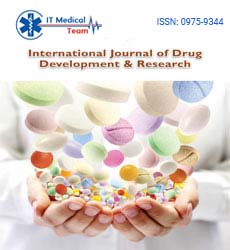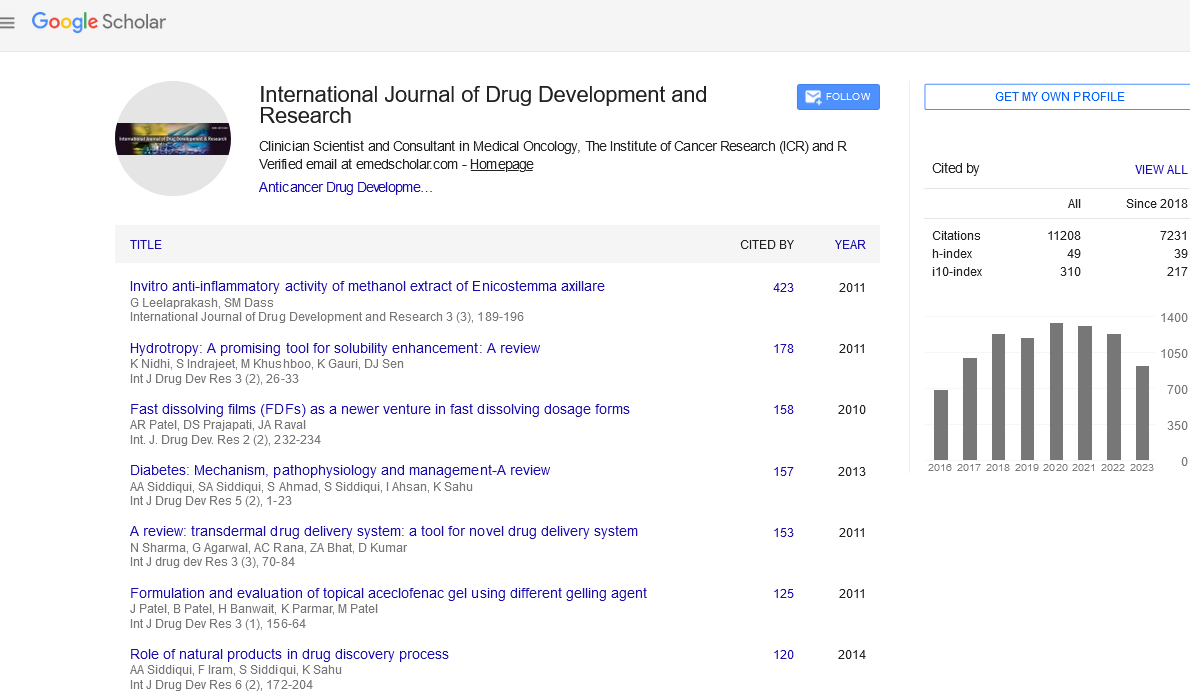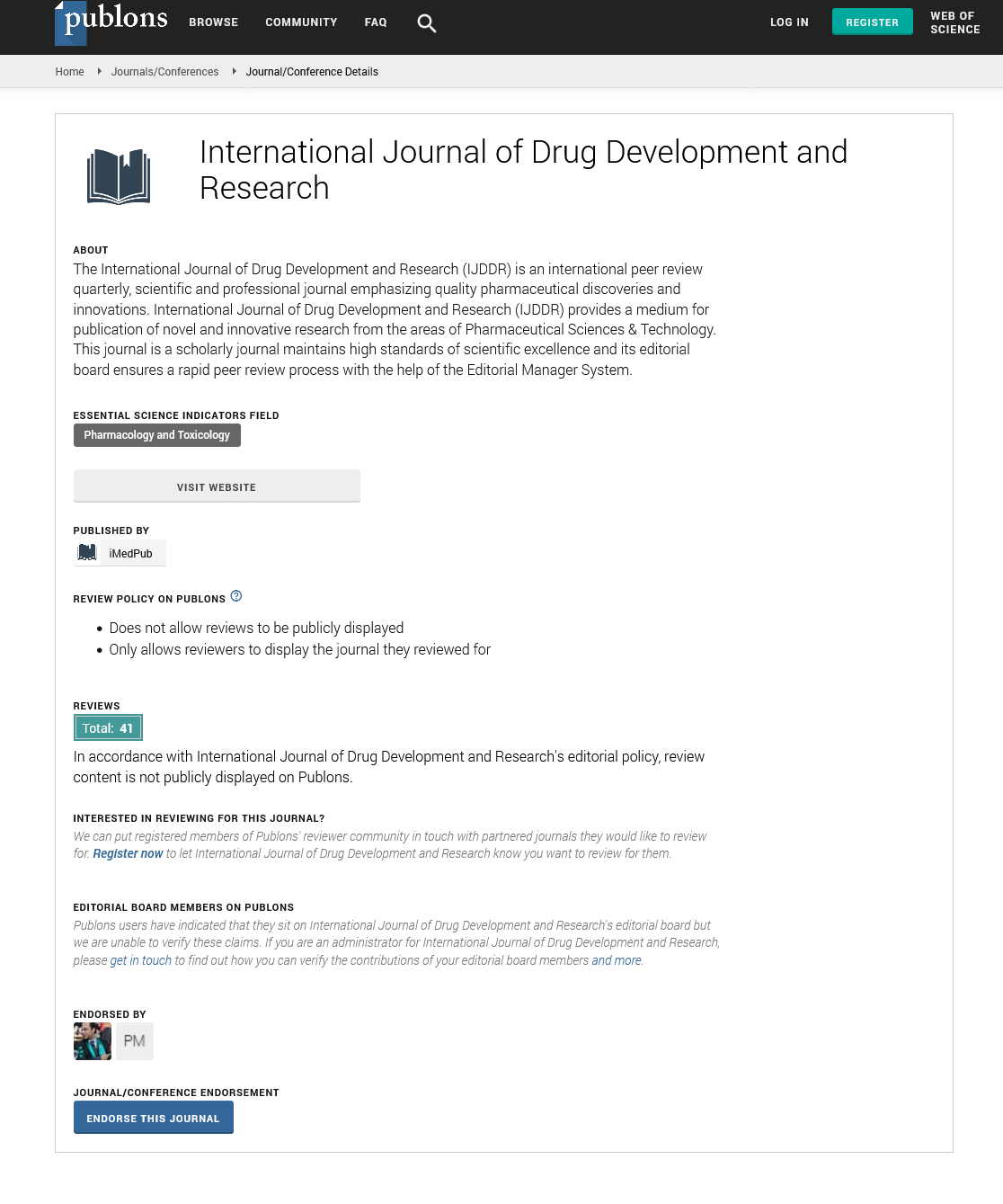Keywords
|
| Rat liver, Lead toxicity, Green tea extract, Enzyme antioxidants |
Introduction
|
| The detection and prevention of lead toxicity have been a major international public health priority. Lead (Pb) is a heavy metal with great environmental health effects and all Pb compounds have been classified as human carcinogens [1]. Lead is used industrially to manufacture electro-plates, batteries, alloys and fuels [2]. The increasing industrial use of Pb causes soil, air and water contamination. Exposure to lead is associated with liver tumors and toxicity [3]. Various studies have shown that lead toxicity in liver seems to be crucially mediated by the production of reactive oxygen species known to induce necrosis in various rat organs [4]; [5], lipid peroxidation [6] and a decrease in antioxidant enzymes [7]. Epidemiological studies have strongly suggested that diet plays an important role in the prevention of chronic diseases [8]. Polyphenolics, commonly found in fruits, vegetables and grains, provide chemoprotective effects to combat oxidative stress in the body and maintain balance between oxidants and antioxidants to improve human health [9]. An imbalance caused by oxidants excess leads to oxidative stress, resulting in damage to DNA and protein and increases the risk of degenerative diseases such as cancer [10]; [11]. Green tea is prepared from tea plant Camellia sinensis. These are rich in flavonoids, and in green tea most important polyphenolic compound. Studies have shown that tea possesses diverse pharmacological properties which include anti-inflammatory [12], antimutagenic [13], antiangiogenic [14], antiaging effects [15] and preventive effects against cancers. The present paper was carried out to study the effect of green tea infusion on hepatic toxicity assessed by lipid peroxidation, enzymatic antioxidants and cell damage biomarkers in rat livers intoxicated by lead. |
MATERIALS AND METHODS
|
|
Green tea extracts (GTE):
|
| Green tea (TCHICO CHINA TEA) was purchased locally (GTE) was prepared according to Khan et al, (2009) by adding green tea (30 g) to 500ml of boiling water, steeped for 15–20 min. Infusion was cooled to room temperature and then filtered. The tea leaves were extracted a second time with 500ml of boiling water and filtered, and the two filtrates were combined to obtain 6,6% green tea extract (6,6 g tea leaves/100 ml water).This dietary treatment reflected a daily consumption of 3 cups of green tea by an adult weighing 70 kg. The resulting clear solution is similar to tea brews consumed by humans. The used extract poured into the animals feeding bottles. The rats supplied with freshly prepared tea every morning. |
Animals and treatments
|
| Adult male Wistar rats (Rattus norvegicus) weighing approximately 120-142g. They were provided with animal feed and water ad-libitum and maintained in 12h light/dark cycles at 24 ± 4°C. All the procedure performed on animals were approved and conducted in accordance with the National Institute of health Guide (Reg. No. 488/160/1999/CPCSEA). |
| Animals were divided into 3 groups (10 rats per group) and caged separately. Group 1 (control): Animals given standard diet and tap water. Group 2: Pb intoxicated rats: Rats were treated with Pb in a dose of 4% for 30 days. Group 3 (group Pb + green tea) was treated with lead and given 6,6% green tea extract instead of drinking water during one months. |
| At the end of the experiment, animals were subjected to light ether anesthesia and killed by cervical dislocation. The blood sample were collected in heparinized centrifuge tube and centrifuged to obtain serum. The abdomen was excised and the liver was removed immediately by dissection, washed in ice-cold isotonic saline and blotted between two filter papers. The liver was wrapped in aluminum foil and stored at – 80oC. A 10% (w/v) liver homogenates was prepared in ice-cold 0.1 M potassium phosphate buffer, PH 7.5 |
|
Histopathological examination
|
|
Histological study
|
| After rats were killed small pieces of liver were removed and fixed by means of 10 % buffered neutral formalin. The specimens were dehydrated and cleared afterward embedded in paraffin blocks. Paraffin sections were cut with at 5μm thickness and stained with routine hematoxylin and eosin (H &E). |
|
Histochemical study
|
| In parallel, histochemical finding was established by means of PAS reaction for glycogen stored [16]. |
|
Biochemical analysis
|
|
Lead analysis in tissues of liver
|
| Pb concentrations in the tissues were determined by employing flame atomic absorption spectrometry according to previously reported methods [17]. Calibration curves were constructed by adding known amounts of lead standard (E. Merck). The diluted sample of the digested tissue was injected into the atomic absorption spectrophotometer (Perkin- Elmer Model 400, Shelton, CT, USA). Hollow cathode lamps of Pb were used at wavelength of 283.3 nm. The results of Pb contents in liver were expressed as ppm. |
|
Total proteins levels
|
| Total proteins levels in plasma and in tissue homogenates of liver were determined by the method of Lowry et al. [18] using bovine serum albumin as the standard. The plasma levels of albumin were determined using commercial kit (Spinreact, Spain) colorimetric method. The liver enzymes activities were measured using commercial kits (Spinreact, Spain): plasma activities of alanine transaminase (ALT), aspartate transaminase (AST) and alkaline phosphatase (ALP). |
|
Determination of antioxidants
|
| Superoxide dismutase activity in tissue homogenates was determined according to its ability to inhibit the auto oxidation of epinepherine at alkaline medium [19]. GST activity in tissue homogenates was chemically determined using 1-chloro-2, 4-dinitrobenzene substrate [20]. |
|
Statistical analysis
|
| Means ± SEM were calculated for the different groups of rats. The statistical evaluation of the data was achieved using Student's t-test. A difference was considered significant at p �0.05. |
|
Results
|
|
Liver function evaluation
|
| The plasma levels of bioindices of liver functions in differentially treated rat groups are given Table 1. The plasma levels of total protein and albumin were significantly low in Pb-treated rats in comparison with control group. Conversely, the plasma levels of total protein and albumin were significantly higher in Pb + GTE-group than Pbtreated rats. The liver enzymes, ALT, AST and ALP activities were significantly elevated in Pb-treated rats in comparison with controls. These enzymes were significantly reduced in Pb + GTE-treated rats comparing with Pb-treated rats. |
|
Lead concentrations in tissues of liver
|
| The Pb concentrations in tissues showed in Table 2. The Pb concentrations were significantly higher in tissues of liver of Pb -treated rats than controls. In Pb+GTE treated rats, the Pb concentrations were significantly reduced in tissues of the studied organ tissues in comparison to Pb- treated rats. |
|
Activity of antioxidant enzymes GST and SOD
|
| The SOD and GST activities in tissue homogenates of liver were significantly decreased in Pb- treated rats comparing with controls. Moreover, in the Pb+GTE-treated rats, the SOD and GST activities in liver tissues were significantly higher than their activities in Pb-treated rats (Table 2). |
|
Histological examination
|
| In control rat liver, the hepatic tissue appeared normal microscopically, the central vein from its region and the hepatic cords were radiating and separated by the blood sinusoids (S) (Fig.1). The distribution of glycogen in the hepatocytes took the magenta colour after Periodic acid Schiff technique (PAS) (Fig. 2). |
| In Pb intoxicated rat liver, the hepatic tissue revealed severe ballooning degeneration of many hepatocytes and some of them were burst down and destructed or necrotic, central vein with perivenous leucocytic infiltration and congested blood sinusoids (Fig.3). The liver showed established acute inflammatory cells and exudates were increased in these animals intoxicated with lead acetate. No marked PAS +ve reaction in the hepatocytes due to deprived glycogen, a number of hepatocytes suffered from severe ballooning degeneration, others were destructed with pervascular leucocytic infiltration in comparison to the control (Fig 4). |
Discussion
|
| Lead, a heavy metal, is among the elements which are present in soils, sediments, air and water. Unlike most metals, lead use began fairly recently with its large-scale application [21]. The classification of lead as a human and animals toxicity in liver is supported by strong evidence from animal experiments. In rodents, lead-induced toxicity is seen in various organs such as liver [22]. Various studies have shown that lead toxicity seems to be crucially mediated by the induction of cells damage in various rats organs [23] by the production of reactive oxygen species. Lead is known to induce the production of hydroxyl radicals [24; 25; 26], superoxide anions, nitric oxide and hydrogen peroxide (25). It also increases the rates of lipid peroxidation in liver [27] and decreases the anti-oxidant enzymes activities [28]. Herbal medicines derived from plant extracts are being increasingly utilized to treat a wide variety of clinical disease. More attention has been paid to the protective effects of natural antioxidants against chemically induced toxicities [29]. Nowadays, tea is considered as a source of dietary constituents endowed with biological and pharmacological activities with potential benefits to human health. The increasing interest in the health properties of tea extract and its main catechin polyphenols have led to a significant rise in scientific investigation for prevention and therapeutics in several diseases [30; 31]. Crespy & Williamson [32] reported that green tea extract (GTE) displays antioxidants and free radicals scavenger properties. Mohamadin et al. [33] found that supplementation of GTE attenuates cyclosporine A induced oxidative stress in rats. |
| In the present study, the levels of Pb in tissues of liver were significantly higher in Pb treated group than controls. Also, fatty changes, hydropic degeneration, and necrosis of the hepatocytes were observed in lead treated group. In addition to mild fibrosis, biliary hyperplasia, edema, congestion, mononuclear inflammatory cells infiltration and apoptotic necrotic cells have been noticed in some other cases. Ingestion of Pb is one of the primary causes of its hepatotoxic effects. The molecular understanding of Pb effects on hepatic drug metabolizing enzymes, cholesterol metabolism, oxidative stress, and hepatic hyperplasia suggest a potential role for Pb in damaging extrahepatic systems, including the cardiovascular system. While, group treated with lead acetate and green tea extracts howed mild degeneration of the hepatocytes without necrosis and binucleated cells that represent good sign of regeneration. [34]. Also, similar results were reported by Shalan et al. (35], Badiei et al. [36], Khan et al. [21] and Shaima et al.[37]. |
| Patra et al. [38] found significant higher levels of Pb in liver of rats exposed to Pb for 4 weeks and a significant reduction of Pb levels after treatment with chelating agent, EDTA, during 5th week [39; 40]. The reduction of Pb concentrations in the studied tissues of the rats treated with GTE combined with Pb may be due to its chelating property. We suggest one possibil- ity that GTE complexes with Pb ion that decreases its lipophilicity, and thus its gastrointestinal absorption. The chelating agents form an insoluble complex with Pb to remove it from Pb-burdened tissues [41]. Flora et al. [42] found sodium molybdate supplementation provide significant protection from Pb uptake by blood, liver and kidney and also to reduce the formation of LPO. |
| According to this work, ingestion of (6,6% GTE) revealed depletion of glycogen in hepatocytes cytoplasm. It may possibly induced instability of metabolic enzymes related to glycogen storage. Hence, it previously reported that the polyphenols of GTE such as flavonoids and pyrogallol are potent inhebetors of the detoxifation enzyme COMT [43] and catechin gallate, the major constituent in GTE were found to inhebits human COMT-mediate O-methyl translation of catechol estrogen with high potency [44]. The mechanism by which green tea extract induces trouble in carbohydrate metabolism may be attributed to mitochondrial toxicity and reactive oxygen species (ROS) formation by tea catechins which induced cytotoxic effects [45]. The present data agreed with other work by [46] and [47] who found that glucose production inhibited by green tea leading to lower blood glucose level that is related to glycogen (PAS-positive) of the hepatocytes. Some authors reported that GTE polyphenols, epigalleatechi-3-gallate was mimetic in that lowered blood glucose, while others approved that glucose-carrier transport through cell membrane [48]. |
| The liver enzyme assays indicated that Pb acetate ingestion induced a significant elevation of plasma ALT, AST and ALP lev- els at 8 weeks of Pb treatment. Since aminotransferases (ALT and AST) are an important class of enzymes linking carbohydrate and amino acid metabolism, the relationship between the intermediates of the citric acid cycle is well established. These enzymes are regarded as markers of liver injury. In addition, ALP is membrane bound and its alteration is likely to affect the membrane permeability and produce derangement in the transport of metabolites. Moreover, elevated ALP activity, which was used as a marker of liver adaptation to damaging factors, has been reported frequently in Pb exposed animals [49; 50]. It is well known that Pb binds to plasmatic proteins, where it causes alterations in a high number of enzymes. It can also perturb protein synthesis in hepatocytes [35]. Pb is not able to induce free radicals directly, but it indirectly influences the processes of lipid peroxidation through damage to the protective antioxidant barrier [38]. Like cadmium, Pb possesses a strong affinity to thiol groups of amino acids, especially cysteine. Pb may affect the antioxidant barrier via inhibiting the functional thiol groups of enzymes such as SOD and GST [51; 41]. Another and the best known enzyme, being inhibited via Pb binding to thiol groups of its active center is dehydratase of delta-amino levulinic acid (�-ALAD). An inhibition of � -ALAD activity leads to an accumulation of �-amino levulinic acid (� -ALA), which undergoes auto-oxidation inducing free radicals and in this way induces lipid peroxidation [52]. The substrate of SOD is the superoxide radical anion (O2−) which is generated by the transfer of one electron to molecular oxygen. This is responsible both for the direct damage of biological macro-molecules and for generating other reactive oxygen species. SOD keeps the concentration of superoxide radicals at low levels and therefore plays an important role in the defense against oxidative stress [53]. The higher concentration of Pb in liver, following experimental exposure was associated with increased oxidative reaction, which might be responsible, at least in part, for Pb induced toxic effects. Oxidative stress induced by Pb may partly be attributed to the inhibited activities of SOD and GST. Thus the study provides further evidence to dysregulation of antioxidant/oxidant balance by Pb. GTE reduced tissue Pb burden, the oral supplementation of GTE to Pb-intoxicated rats augmented the antioxidant potential by affecting the antioxidant enzyme activities besides reducing the tissue injury of liver cells. |
| In conclusion, although additional studies are needed, it could be suggested that GTE could partly protect hepatocytes through antioxidative, anti-inflammatory mechanisms against liver injury induced by lead. The signaling mechanisms associated with protection against the liver damage and oxidative stress status induced by lead via intake of GTP still need merit further investigations. |
Tables at a glance
|
 |
 |
| Table 1 |
Table 2 |
|
| |
Figures at a glance
|
 |
 |
 |
| Figure 1 |
Figure 2 |
Figure 3 |
 |
 |
 |
| Figure 4 |
Figure 5 |
Figure 6 |
|
| |












